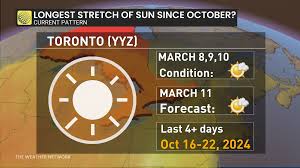
Introduction
As cold temperatures begin to sweep across Canada, frost advisories play a critical role in alerting the public about potential freezing conditions. These advisories inform not only residents about the risks to their health and property but also agricultural sectors that can be severely impacted by unexpected frost. With climate change influencing weather patterns, understanding frost advisories has never been more crucial.
What is a Frost Advisory?
A frost advisory is issued by weather authorities, when temperatures are expected to drop to a level that could cause frost formation on surfaces. These advisories are a significant tool, especially during fall and spring months, when temperatures can fluctuate drastically between day and night.
Recent Events
This October, several regions in Canada experienced frost advisories as temperatures plummeted overnight. For instance, in Ontario, parts of southern Ontario were placed under frost advisories, with temperatures dipping to as low as -2°C. The warnings were mainly aimed at farmers, who were reminded to take precautions to protect their crops from damage.
According to Environment and Climate Change Canada, the advisories help meteorologists deliver timely warnings to the public and mitigate the adverse effects of frost. Authorities advise gardeners and farmers to cover plants, bring in sensitive items, and be prepared for possible damage to crops if protective measures aren’t taken.
Impact on Agriculture
Frost can have devastating impacts on crops like tomatoes, beans, and corn, which are sensitive to cold temperatures. Farmers across Canada are advised to monitor weather forecasts closely and take precautionary steps. In the 2022 growing season, farmers reported losses in certain crops due to unpredicted frost conditions—situations that frost advisories aim to prevent.
Conclusion
As the climate continues to change, the likelihood of experiencing abrupt weather shifts has increased, making frost advisories ever more critical. Collectively, both urban residents and rural farmers must heed these warnings to safeguard health, property, and crops. Moving forward, staying educated about local weather forecasts and responding to advisories promptly can effectively reduce risks associated with frost and minimize economic losses in agriculture.






